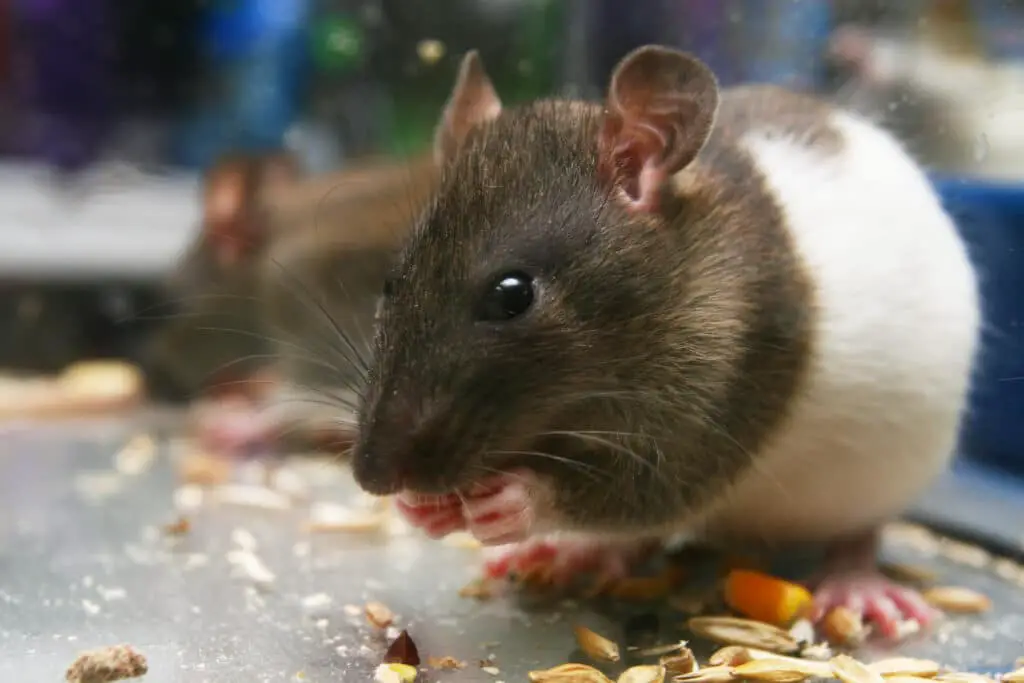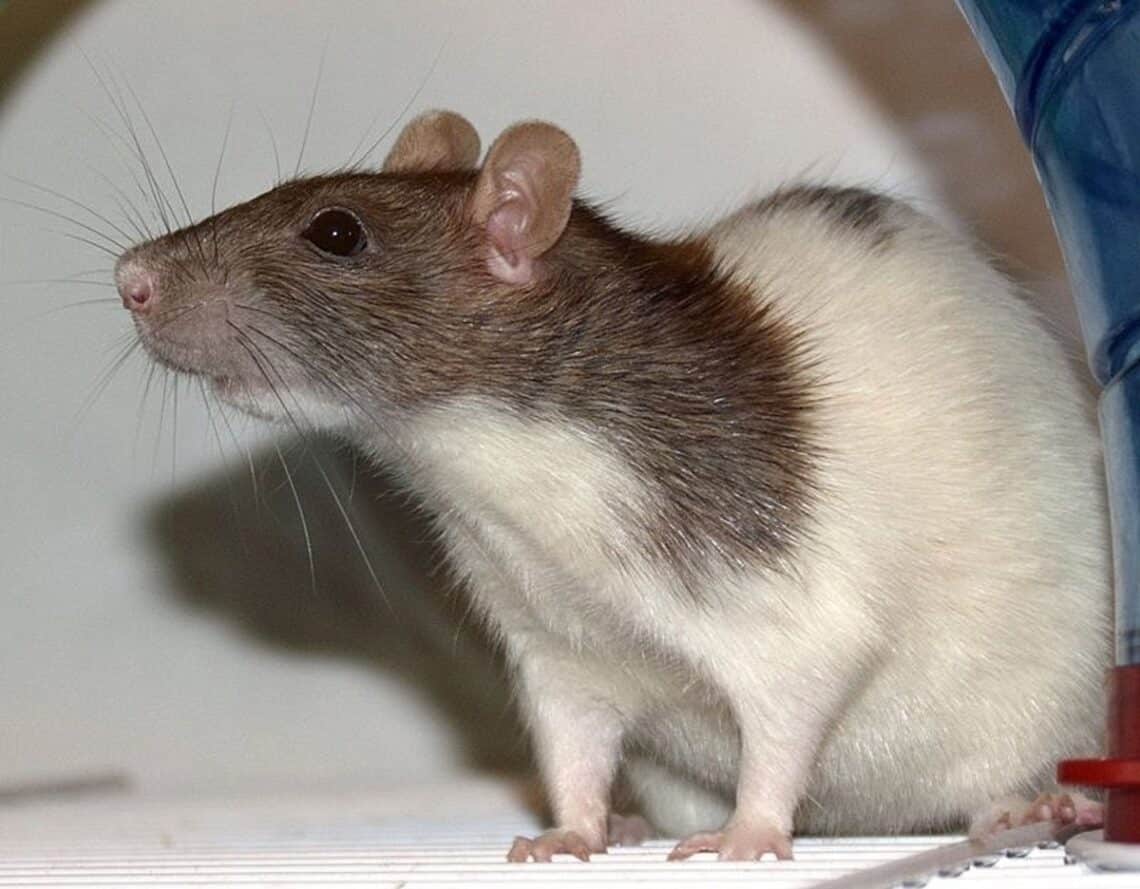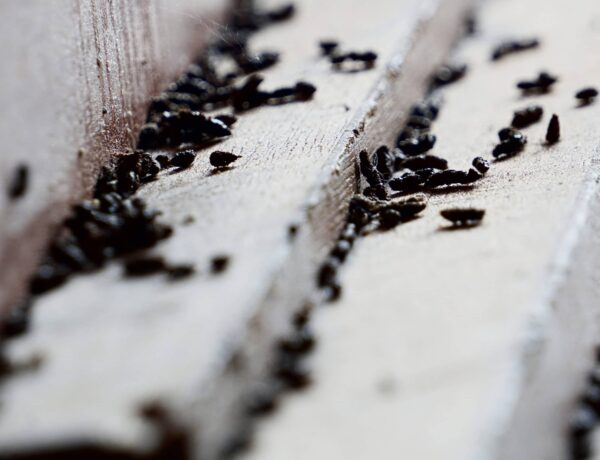Introduction
What Smells Do Rats Hate: Rats are notorious for their adaptability and resourcefulness, but there are certain smells that they strongly dislike and often actively avoid. Large birds like owls are also predators of rats. Create a mixture of water, detergent, and ammonia and spray it in the corners of your roof void. If you have rats outside your house, you can build nest boxes to attract birds, and they can kill rodents and destroy exterior nests.
Leveraging these aversions can be an effective means of deterring rats from your home or property. Understanding the smells that rats hate is essential for rat control and prevention.
From natural remedies like peppermint and essential oils to household items like ammonia and vinegar. Whether you’re dealing with a rat infestation or simply seeking to fortify your property against potential invaders, rat scents will equip you with the knowledge and strategies to create an environment that rats find inhospitable.

What is the first step in getting rid of rats?
The first step in getting rid of rats is to conduct a thorough inspection of your property to confirm the presence of rats and identify areas where they are active. This initial assessment is critical for developing an effective rat control plan. The next step is choosing between using rodent baits, rat traps, or a combination of both methods. Inspection is an essential first step in getting rid of rats.
Look for Signs: Examine your property for signs of rat activity. Common indicators include rat droppings, which are small, dark pellets, and gnaw marks on wires, insulation, or food packaging. Listen for scratching or scurrying sounds in walls or ceilings, especially during the night.
Visual Confirmation: If possible, try to visually confirm the presence of rats. Look for them at dawn or dusk when they are most active. Rats are cautious creatures and often avoid direct human contact, so spotting them can be challenging.
Inspect Entry Points: Examine your home for potential entry points that rats could be using to access your property. Rats can squeeze through small openings, so look for gaps in walls, vents, windows, and rooflines.
Outdoor Areas: Investigate your yard and outdoor spaces for burrows, nests, and signs of rat activity. Address any factors that might attract rats, such as open garbage containers or pet food left outside.
Seek Professional Help: If you’re unsure about rat activity or suspect an infestation but haven’t visually confirmed it, consider consulting a pest control professional. They can conduct a thorough inspection and provide expert guidance.
Can you get rid of rats naturally?
“Peppermint oil, citronella and eucalyptus essential oils in their pure form are all smells that rats will dislike. “A few drops of these oils in their pure form around the areas you know the rats have been should do the trick.” Alternatively, soak cotton wool in essential oil and place in rat traffic areas.
It is possible to get rid of rats naturally using a combination of preventive measures, repellents, and humane exclusion methods. Natural rat control methods are often preferred by those who want to avoid using toxic chemicals or harming the rats.
Some natural approaches to rat control:
Seal Entry Points: The first step is to prevent rats from entering your home by sealing all possible entry points. This includes gaps in walls, roofs, vents, and cracks in foundations. Use materials like steel wool, caulk, or wire mesh to block these openings.
Proper Sanitation: Remove potential food sources by storing food in airtight containers, cleaning up crumbs and spills promptly, and securing garbage bins with tight-fitting lids.
Natural Repellents: Certain scents are known to deter rats. Peppermint oil, vinegar, cayenne pepper, and garlic are examples of natural rat repellents. Soak cotton balls in these substances and place them near rat-prone areas.
Predators: Encourage natural rat predators such as owls, snakes, and cats to frequent your property. Installing owl boxes or creating a friendly environment for barn owls can be effective natural control methods.
Ultrasonic Devices: Some ultrasonic devices emit high-frequency sounds that are unpleasant to rats but safe for humans and pets. These devices can be used to deter rats from specific areas.
Rat-Resistant Plants: Planting certain herbs and flowers like mint, marigolds, and daffodils around your property can help repel rats.
Natural rat control methods can be effective, but they may require patience and consistency. Keep in mind that severe infestations may necessitate professional pest control assistance to fully resolve the issue.
How quickly can you get rid of rats?
A typical rat infestation extermination can be expected to take around 4-5 weeks to complete. However, if you are dealing with a severe infestation that is deep within the walls, attics, and crawl spaces of your home, complete rat removal can take up to 3 months.
The timeline for getting rid of rats can vary widely depending on several factors, including the extent of the infestation, the methods used, and your diligence in implementing control measures.
Detection: The first step is to detect the presence of rats, which may take a few days to several weeks. This includes identifying signs such as rat droppings, gnaw marks, and unusual noises in your home.
Planning: Developing a comprehensive rat control plan can take some time, especially if you’re researching effective methods, gathering necessary supplies, or seeking professional advice.
Implementation: The process of implementing control measures, such as sealing entry points, setting traps, or using bait, can take several days to weeks. The size of your property, the complexity of the infestation, and the chosen methods all affect this timeline.
Monitoring: After implementing control measures, you’ll need to monitor the situation for several weeks to ensure that rat activity decreases and eventually ceases. This period can vary from a few weeks to a few months.
Clean-Up and Prevention: Once rats are successfully eliminated, you’ll need to clean and sanitize affected areas, repair any damage, and implement preventive measures to keep rats from returning. This phase may take a few days to a week.
The entire process can range from a few weeks to several months, depending on the specific circumstances. To remain patient and persistent during this time, as a hasty approach may not yield lasting results. For severe infestations or if you’re unsure how to proceed, seeking professional pest control assistance can expedite the process and ensure a more effective outcome.
What is the best solution for rats?
To get rid of rats, inspect for signs of rat activity, remove food sources and nesting materials, seal the gaps and cracks rats use to access your home, and place multiple traps in rat runways. Bait traps with high-aroma foods like peanut butter, hot dog pieces, or chicken.
The best solution for rats depends on the specific situation and the severity of the infestation. Effective rat control often involves a combination of strategies tailored to the circumstances.
Some key components of a comprehensive rat control plan:
Identification and Inspection: The first step is to identify the presence of rats and conduct a thorough inspection to assess the extent of the infestation.
Prevention: Seal entry points and eliminate food and water sources to prevent rats from gaining access to your property in the first place.
Sanitation: Maintain a clean environment, promptly clean up food crumbs and spills, and secure garbage containers to remove attractants.
Natural Deterrents: Use natural rat deterrents like peppermint oil, vinegar, or garlic to repel rats from specific areas.
Traps: Set traps in areas with rat activity, using appropriate bait to capture and remove rats humanely. Snap traps and live traps are commonly used.
Baits: If necessary, use rodenticide baits, but exercise caution and follow safety guidelines to prevent harm to non-target animals and pets.
Professional Pest Control: In severe infestations or if DIY methods prove ineffective, seek the services of a licensed pest control professional who can assess the situation and implement effective eradication measures.
The best solution for rats often involves a combination of these methods, with a focus on prevention and humane removal. The choice of strategy should prioritize the safety of your family, pets, and the environment.
What causes rats in the ceiling?
Rats commonly get into homes by climbing from tree branches onto roofs. Store garbage and compost piles in bins with well-fitting lids. Keep your kitchen clean and store food in airtight containers.
Rats in the ceiling are typically drawn to this area due to several factors, primarily related to their survival needs and natural behaviors:
Shelter: The ceiling provides rats with a concealed and sheltered space where they can build nests and raise their young. It offers protection from predators and the elements, making it an attractive nesting site.
Warmth: Ceilings are often warmer than the outdoor environment, making them a suitable location for rats to stay comfortable, especially during colder seasons.
Proximity to Food Sources: Rats are opportunistic feeders and are often attracted to homes and buildings where they can find readily available food sources. If there is a nearby food supply, rats may venture into the ceiling to establish a base for foraging.
Access: Rats are excellent climbers and can easily access roofs and ceiling spaces through small openings or entry points on the exterior of buildings. Gaps in rooflines, vents, or damaged eaves can serve as entry points.
Quiet Environment: Ceilings are generally quiet and undisturbed areas, which aligns with rats’ preference for hidden, peaceful locations to nest and rear their young.
Safe Routes: Rats are known for using structural elements like walls and plumbing to travel within buildings. They may access the ceiling via these routes.
Addressing a rat infestation in the ceiling involves identifying and sealing entry points, removing attractants, and implementing control measures to eliminate the rodents from this hidden space. Regular maintenance and prevention efforts can help deter rats from taking up residence in your home’s ceiling in the first place.
What attracts rats in the ceiling?
Rats are attracted to attics as they offer warmth and shelter. A well-insulated loft not only keeps your home cozy but provides a warm haven for rodents. Rats are skilled climbers and can scale outside walls to reach the top of your house.
Several factors can attract rats to the ceiling or attic space in a building:
Food Sources: The availability of food is a primary attractant for rats. If there are food remnants or open containers in your attic, rats may be drawn to the area. This can include stored birdseed, pet food, or even food waste.
Warmth and Shelter: Ceilings and attics offer warmth and shelter, making them attractive nesting sites, especially during cold weather. Rats seek cozy, concealed spaces to build nests and give birth to their young.
Water Sources: Rats need access to water, so if there’s a leak or moisture issue in your attic, it can attract them. They may also use the insulation material in the ceiling for nesting, which can retain moisture.
Entry Points: Rats can access the ceiling or attic through entry points on the exterior of the building. Gaps in rooflines, vents, or damaged eaves provide convenient access for these rodents.
Quiet Environment: Rats are nocturnal and prefer quiet, undisturbed environments. Ceilings and attics are often less frequented by humans, providing a relatively safe and peaceful space for rats to hide.
Nesting Materials: Rats are known for gathering materials like insulation, fabrics, and papers to build their nests. If these materials are present in the attic, rats may be attracted to them.
To prevent rats from being attracted to your ceiling or attic, it’s essential to seal entry points, eliminate food and water sources, and maintain a well-maintained and clutter-free space. Regular inspections and proactive measures can help deter rats from taking up residence in your home’s upper spaces.
Are roof rats a problem?
Roof rats are also dangerous because they can carry a host of diseases, including Salmonella, dysentery, and even rabies. These diseases can be transmitted through the urine and fecal droppings they leave throughout your home.
Roof rats can be a significant problem when they infest homes or properties. These rodents, scientifically known as Rattus rattus, are known by various names, including black rats, ship rats, or house rats.
Some reasons why roof rats are considered problematic:
Property Damage: Roof rats are notorious for their gnawing and chewing habits. They can cause extensive damage to buildings by chewing on electrical wires, insulation, structural materials, and even personal belongings.
Health Risks: Roof rats carry a range of diseases and parasites that can be transmitted to humans. Their feces and urine can contaminate food and surfaces, posing health hazards.
Contamination: The presence of roof rats can lead to contamination of living spaces with their droppings, urine, and fur. This can affect indoor air quality and create foul odors.
Crop Damage: In agricultural areas, roof rats can cause significant damage to crops, impacting livelihoods and food supplies.
Nuisance: The sounds of roof rats moving, gnawing, and scratching in ceilings, walls, and attics can be a constant nuisance, disrupting sleep and causing stress.
Property Devaluation: An active roof rat infestation can devalue properties and make them less attractive to potential buyers or renters.
Due to these problems, it’s crucial to address roof rat infestations promptly and effectively. Implementing rat control measures, such as sealing entry points, using traps or baits, and maintaining a clean environment, is essential to mitigate the damage and health risks associated with these pests.
Are roof rats blind?
Roof Rats have very poor vision and are color blind, but their senses of hearing, smell, touch and taste are keenly developed. They are good runners, excellent climbers and jumpers, and if forced they are good swimmers. Roof rats are not blind. In fact, they have relatively good vision, although it may not be as acute as some other animals. Roof rats are crepuscular, which means they are most active during dawn and dusk, and their eyes are adapted to low-light conditions.
Some characteristics of roof rats’ vision:
Color Vision: Roof rats have color vision, allowing them to distinguish between different colors. This can be useful for identifying food sources and assessing their surroundings.
Nocturnal Adaptations: While they are not completely blind at night, roof rats have specialized adaptations for low-light vision. Their pupils can dilate to let in more light, and they have a higher number of rod cells in their retinas, which are sensitive to dim light.
Acuity: Roof rats have relatively sharp vision for detecting movement and objects in their environment. This helps them navigate and locate potential threats or food.
Near-Sighted: Roof rats are considered to be near-sighted, meaning they see objects more clearly at close distances. This is common among nocturnal animals that rely on close-up visual cues.
While vision is a part of roof rats’ sensory perception, they also rely heavily on their other senses, such as smell, touch, and hearing, to navigate and locate food sources. Overall, their vision is adapted to their crepuscular and nocturnal lifestyle, allowing them to function effectively in low-light conditions.

Conclusion
The smells that rats hate can be a valuable tool in deterring these unwanted rodents from your home or property. Rats have a highly developed sense of smell, and certain odors can repel them, making it an essential aspect of rat control and prevention. By strategically using these natural repellents and maintaining a clean and rat-unfriendly environment, you can discourage rat infestations and protect your living spaces from the damage and health risks these pests pose.
The smells can be effective deterrents, they may not provide foolproof rat control, especially in the case of severe infestations. Combining odor-based prevention with other rat control measures, such as sealing entry points and setting traps, is often necessary for comprehensive and long-term success.
Rat control is an ongoing process that requires vigilance and a multifaceted approach. By leveraging the power of smell along with other effective strategies, you can create an environment that rats find inhospitable, helping to keep your home rat-free and your peace of mind intact.





No Comments